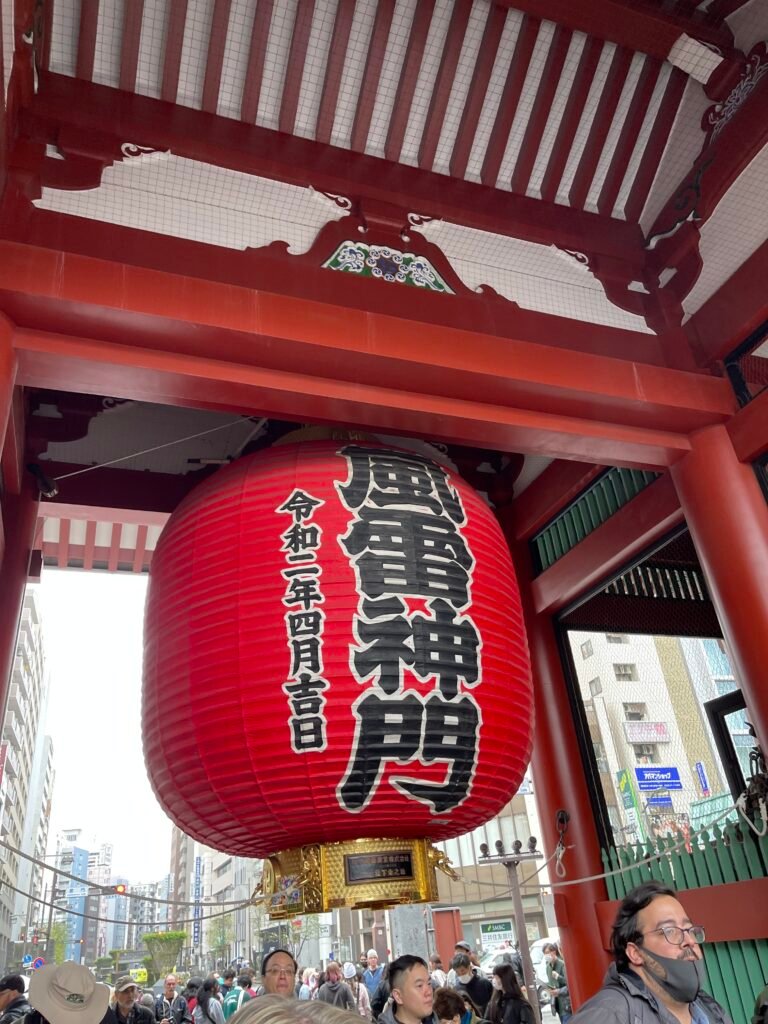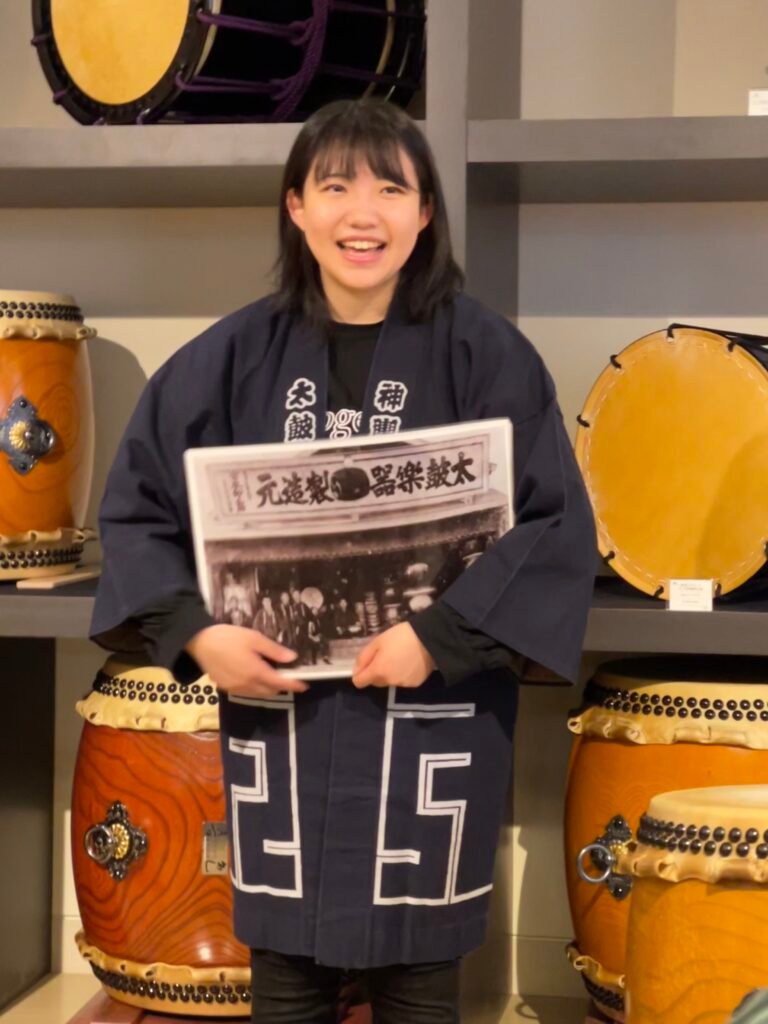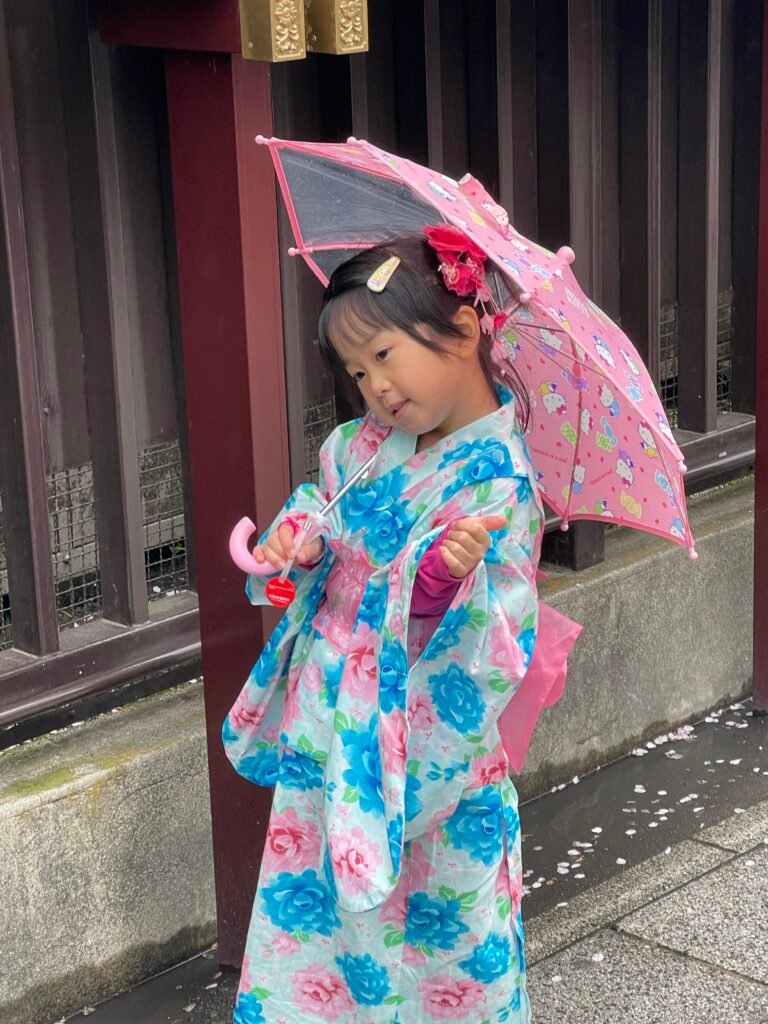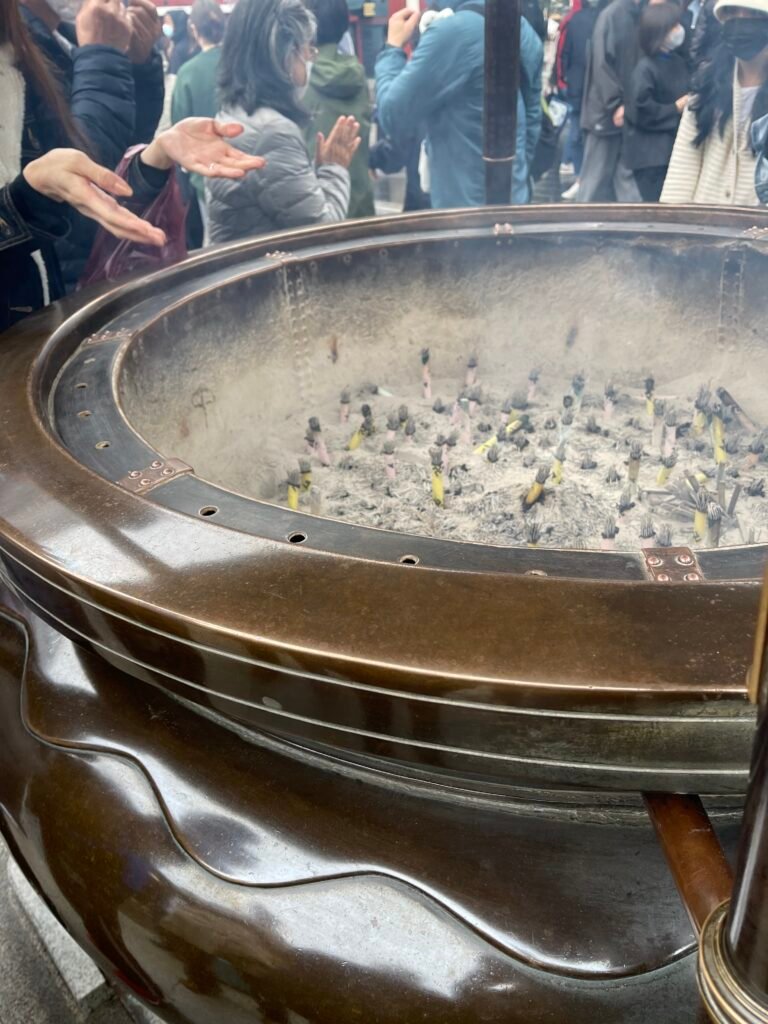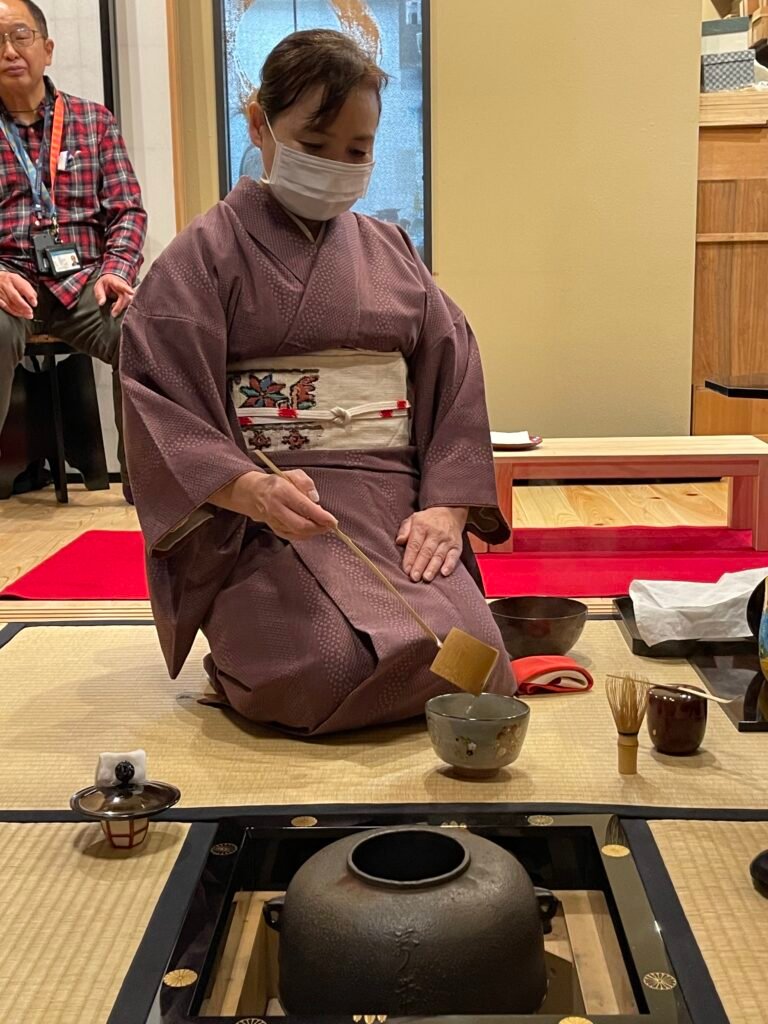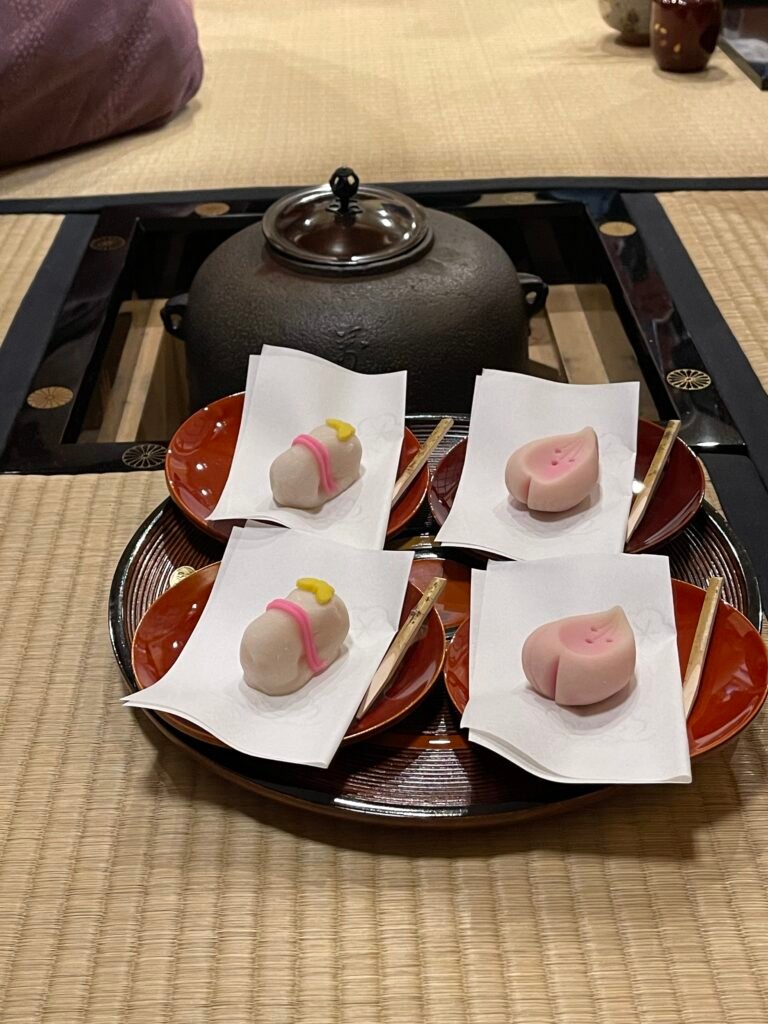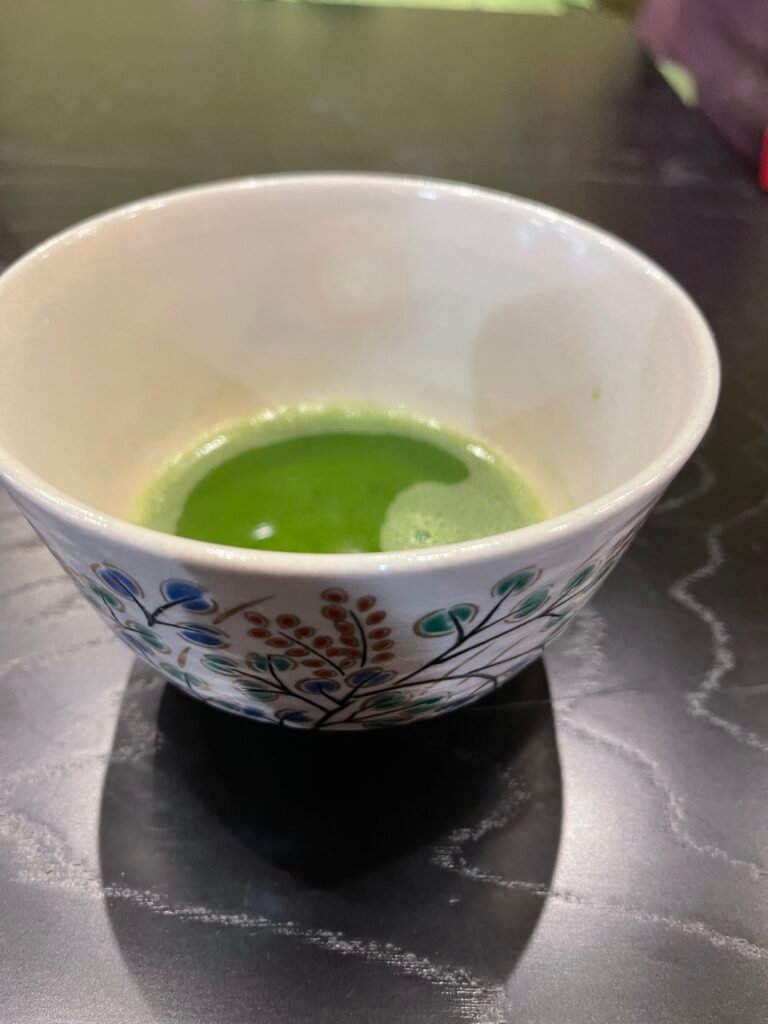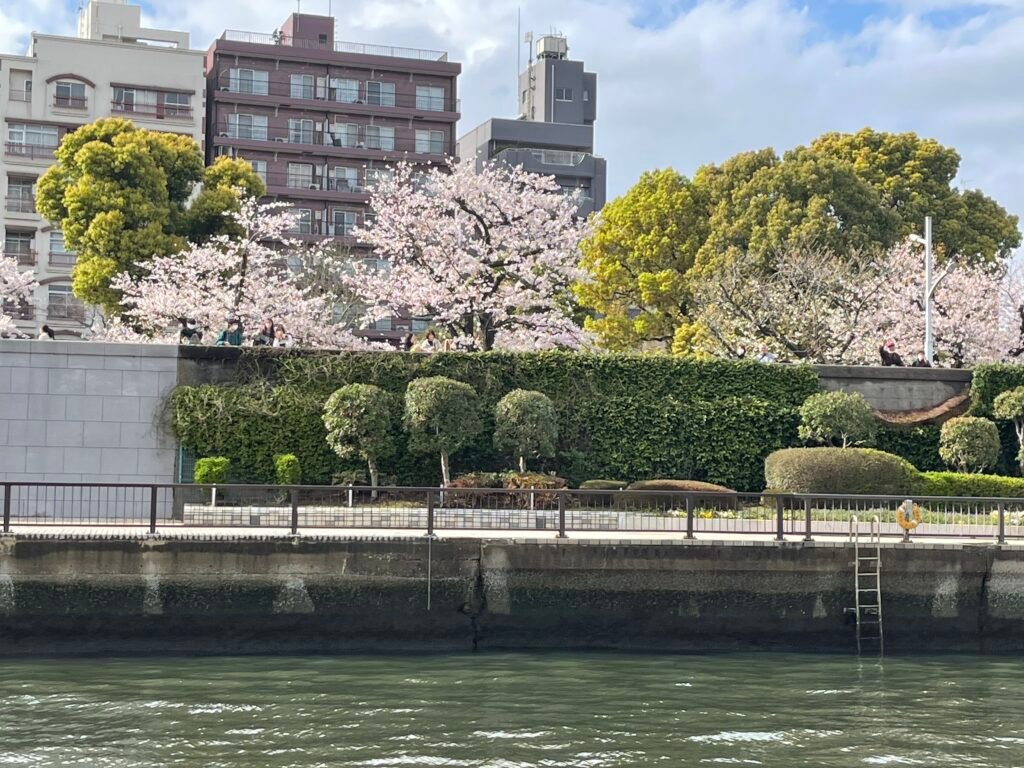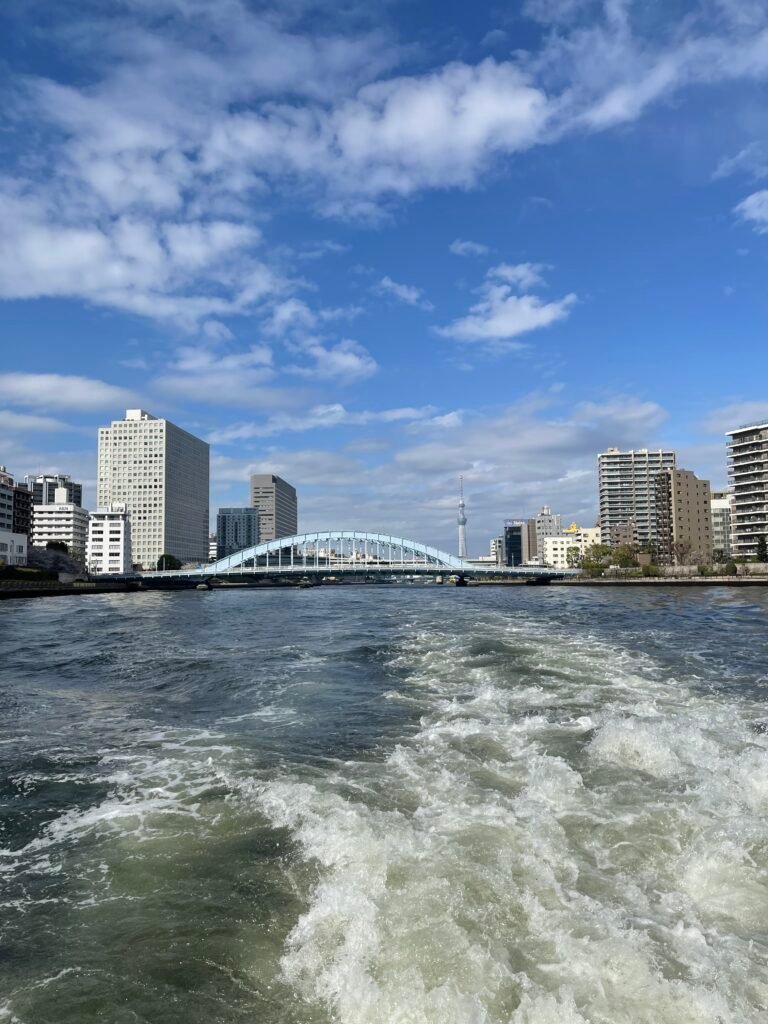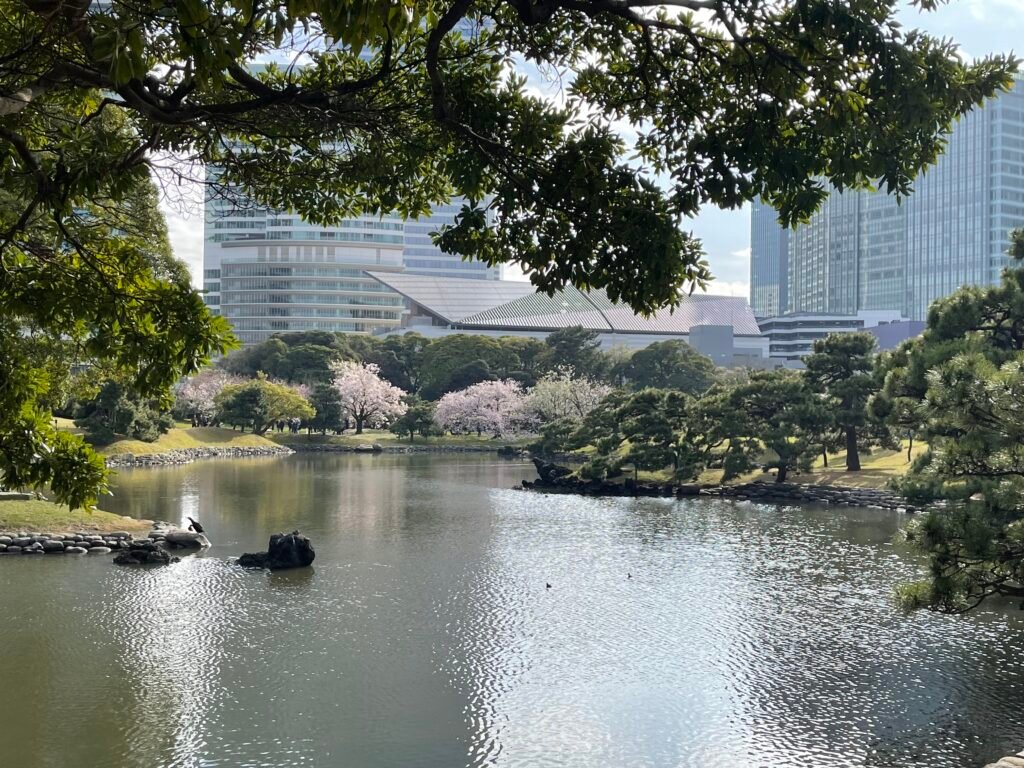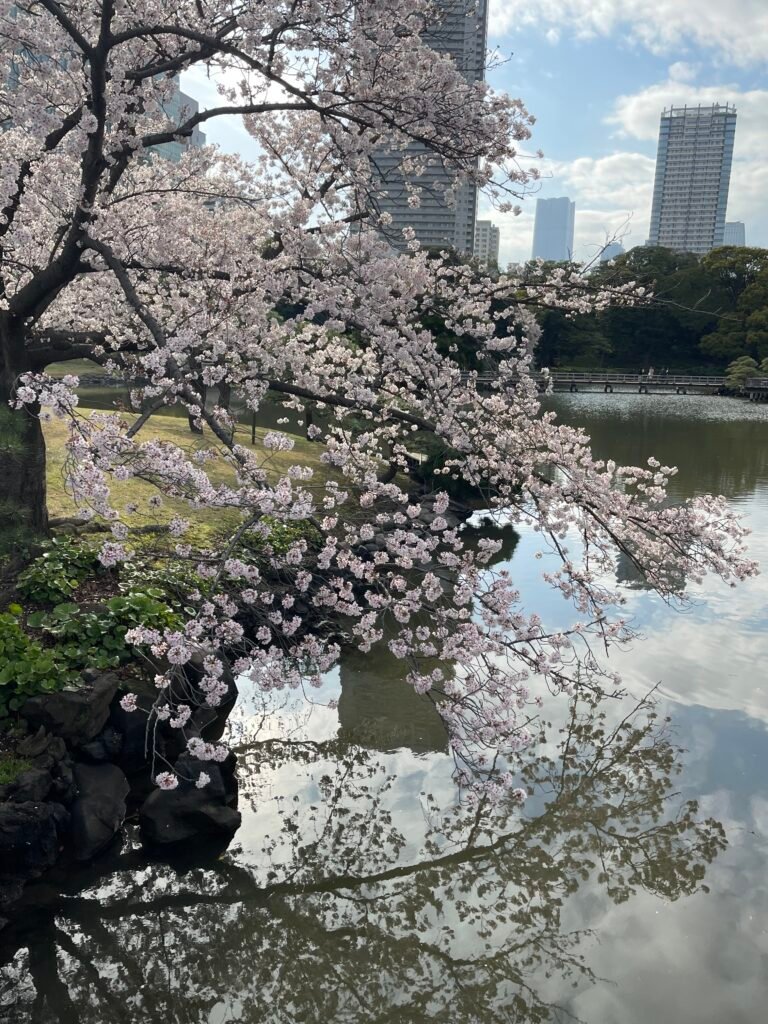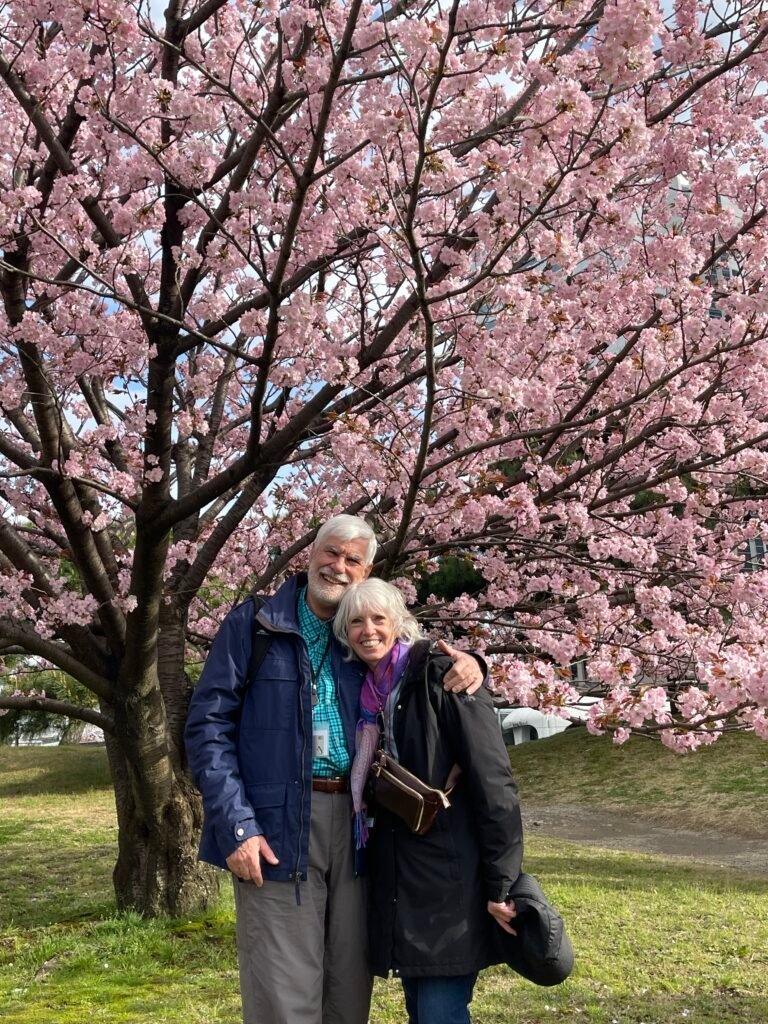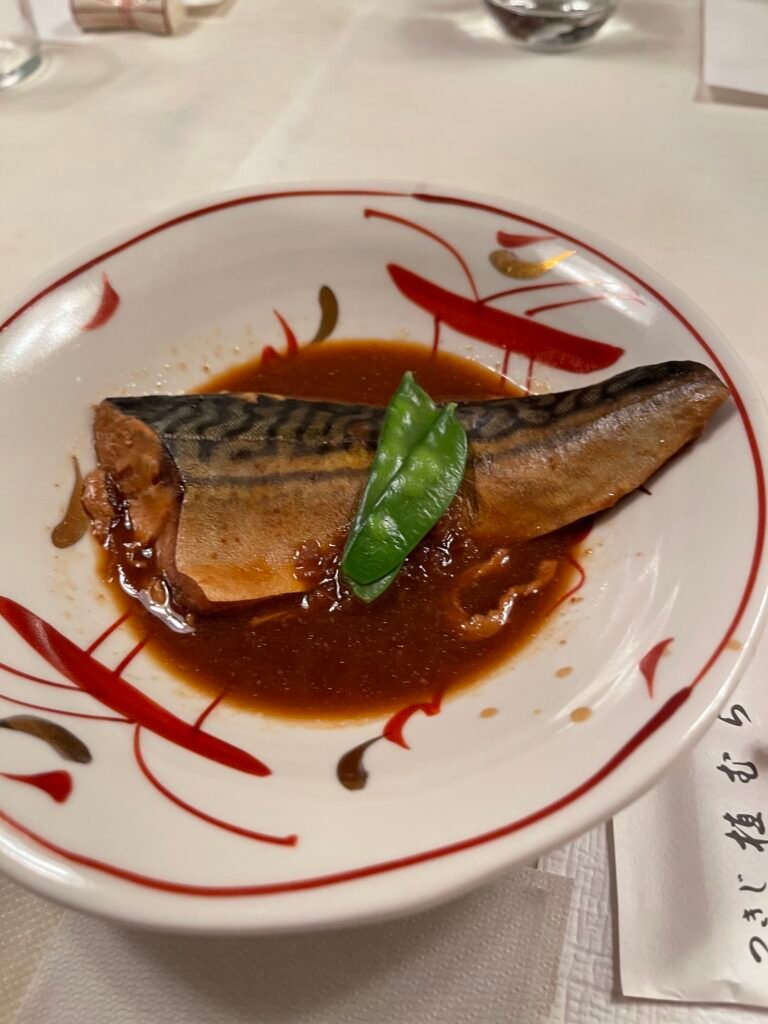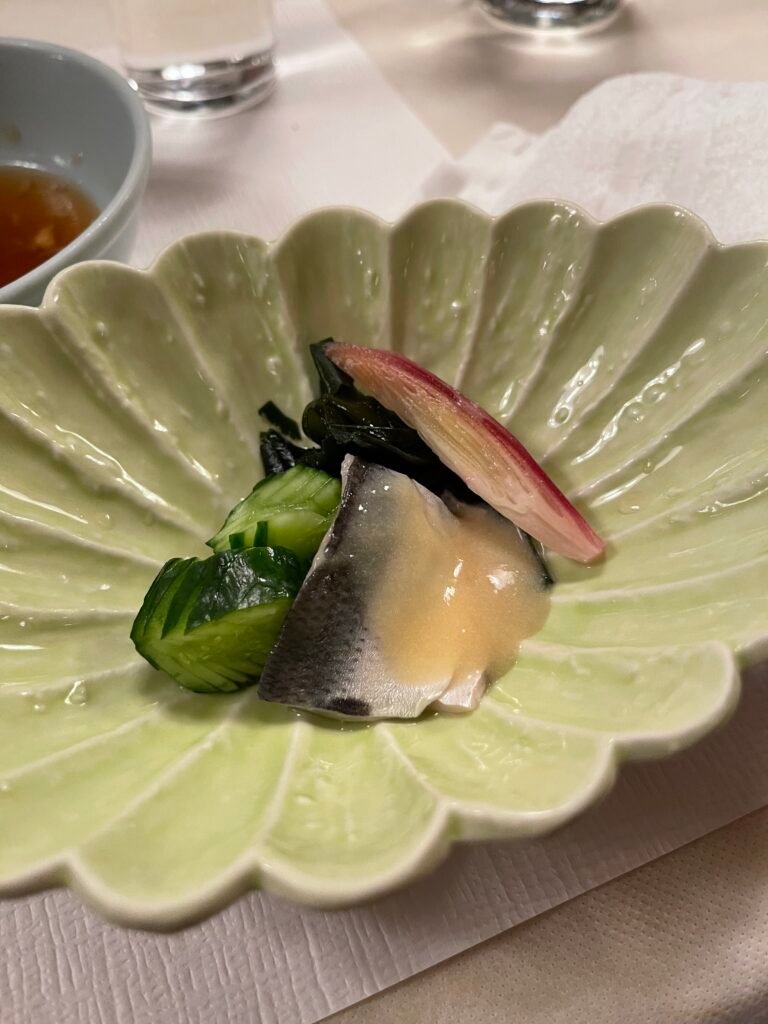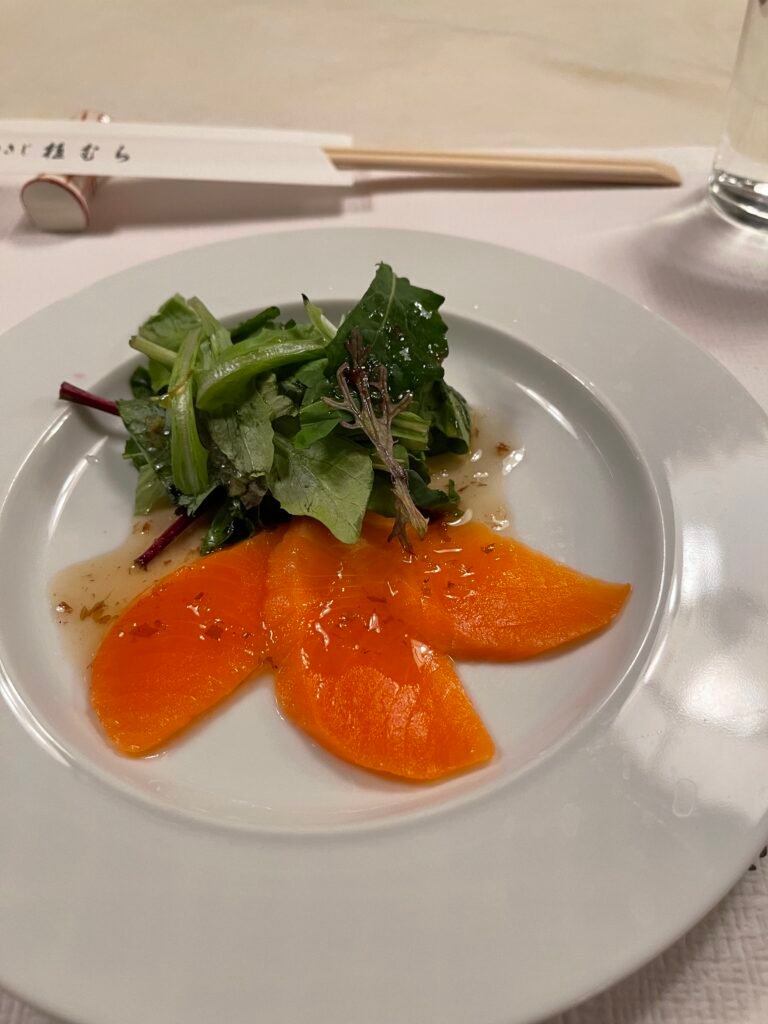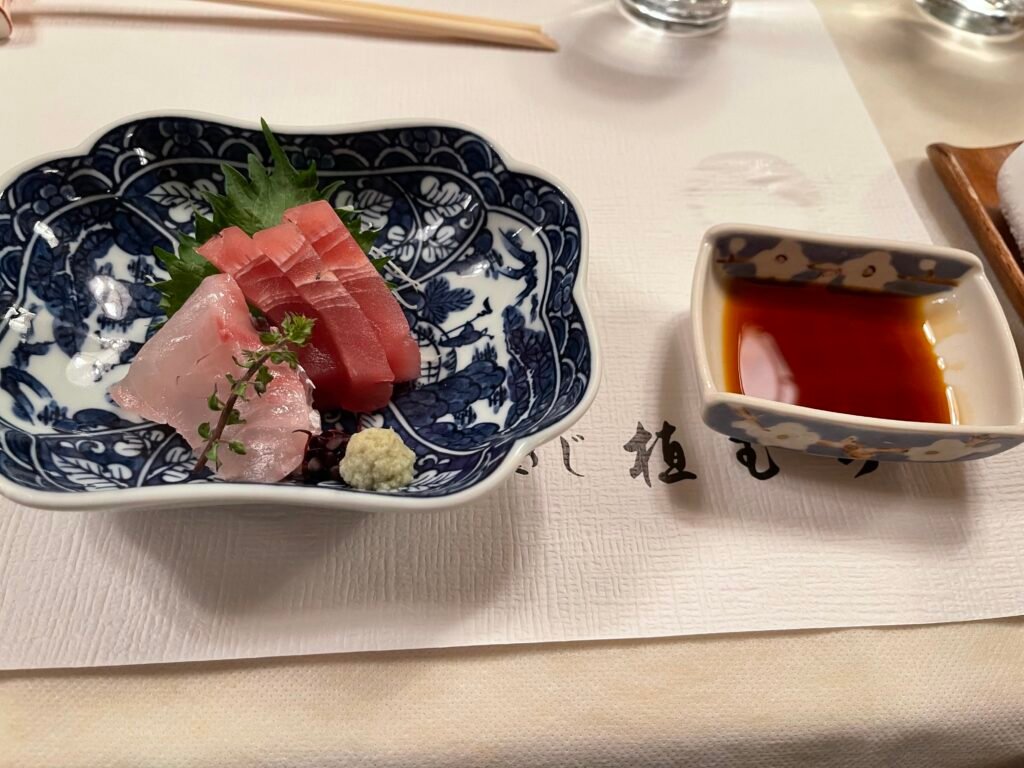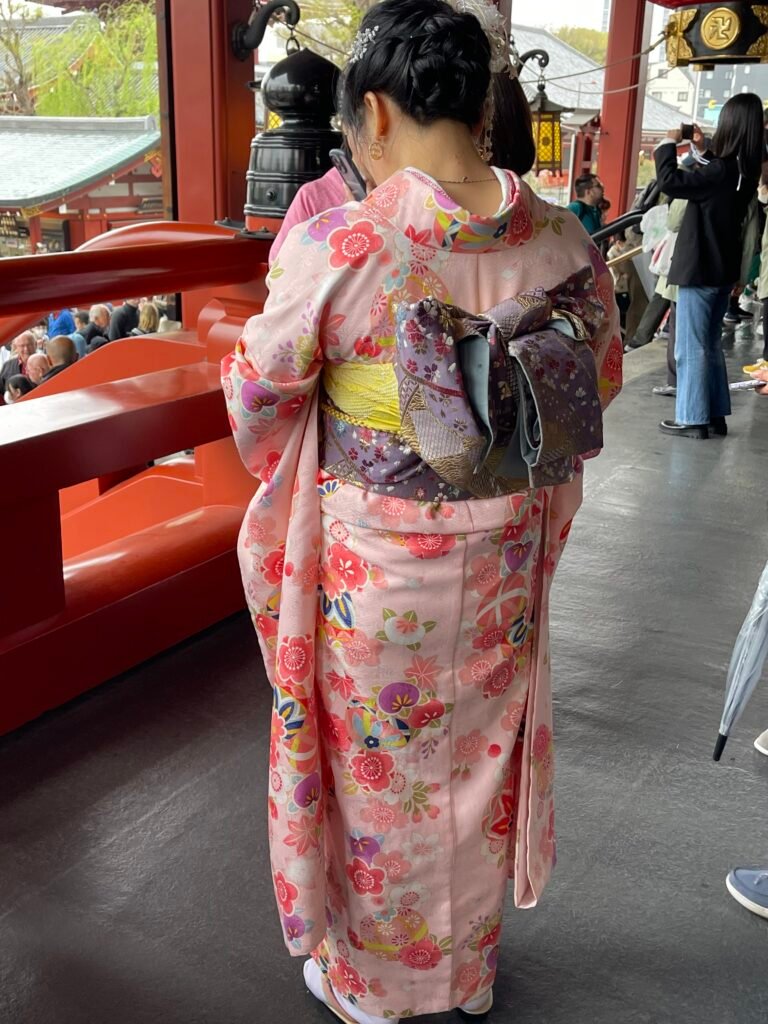We started the morning having breakfast on the western side of the hotel restaurant. I’ve been spoiled in only one day, with Japanese breakfasts, so tomorrow we will be back enjoying steamed dumplings and tiny meatballs at the Japanese side. The western breakfast wasn’t thrilling, as it offered the usual suspects – scrambled eggs, breads, and fruit, with a few other dishes thrown in. The Japanese menu was so much better.
After breakfast, we walked to the subway and boarded a train to Asakusa. The subway system is very organized. You place your transit card on the flat area, it is scanned, and the gates open. You stand in designated spots, but when the train comes, you must enter quickly, as the train will not wait and the doors will close.
The subway is immaculate as is the train, and before we knew it, we were at our destination and emerging out into the streets. It was raining today, but we all were prepared with raincoats and umbrellas so the light rain didn’t rain on our parade.
Our first stop was the Kaminarimon Gate, or Thunder Gate, with its giant red lantern and statues of the god of Thunder on the right, and the Wind god on the left. It is Asakusa’s most famous landmark, which was proven by the crowds of people waiting to have their pictures taken in front of the gate, before passing through and into the merchant street beyond, where souvenirs abounded.
We continued our walk and finally arrived for our Taiko drum lesson. Taiko drums are ceremonial drums that have been used throughout Japan’s history and are handmade using wood from the Japanese zelkova tree. The heads of the drums are made from cow hides and will determine the sound of the drum when struck with the drumsticks. The drum is tuned by stretching the hide and tuning must be done periodically to preserve the pitch.
We had the pleasure of listening to a performance by a 22 year old drum master, on one of the Taiko drums. The drums are LOUD and I found myself wishing I had thought to bring earplugs, something that this young girl did not use, and didn’t intend to ever use in the future. We all were concerned that she will likely be deaf by the age of 60.
After her amazing performance, we had the opportunity to beat out rhythms, under her guidance, to make our own music as a group. The master taught us the proper way to hold the sticks and the way to bring your arm up high and then bring it down, bending at the elbow, before striking the drum head. It is an art form that will no doubt be preserved, as more than ever, people are learning the Taiko drumming techniques to keep the tradition alive. We thanked the young drum master and walked on to visit the Sensoji Temple, which is a Buddhist temple founded in the 7th century, thus becoming the oldest temple in Tokyo (although much of the temple has been rebuilt because of WW II).
In front of the temple is a huge incense burner and as you pass, you are engulfed in the smoke. Our guide encouraged us to go close to the burner and with our hands, waft the smoke towards a body part that might need healing, as it is thought that doing so will definitely purify and heal that ailment.
After our visit to the temple, we had a delicious lunch of beef stew over rice, but we couldn’t take time to savor it, since we were due at a formal Japanese tea ceremony that we had to rush to get to for our reservation.
We were greeted at the door by our hosts, and after sitting down, we cleansed our hands and then we were presented with cherry blossom water, with an edible salted blossom inside, to be enjoyed before the actual ceremony took place. We then performed the shoe etiquette that I mentioned yesterday, removing our shoes and entering the tea room. Traditionally, guests would enter the tea room via a low and narrow door, which shows respect for the host, but we were not asked to participate in that part of the ritual.
Most of us sat crossed legged on tatami mats and watched our host go through the beautiful ritual of preparing Matcha tea. We were first given a savory sweet that would help enhance the flavor of the tea. Then our host commenced with the ceremony, implementing with grace the many steps that are required. The ceremony from start to finish was peaceful and meaningful, and if you are interested, you can google Japanese tea ceremonies to understand more about its significance and the elegant beauty of it.
When the ceremony was over, we left the tea room and sat down where we first enjoyed the blossom water, and we made our own Matcha tea, using the technique we learned from our host.
We bid our host goodbye, and then walked to what was the highlight of the day for me – a cherry blossom river cruise. The cherry blossoms are in full bloom and our guide arranged for us to take this 45 minute ride, with gorgeous cherry blossom trees flanking the river. It was glorious, and we all enjoyed seeing not only the cherry trees, but the unique buildings along the way. The sun had broken through the clouds as we boarded the boat and stayed with us for the rest of the afternoon.
When our boat ride was over, we strolled through the Hama-rikyu gardens, where beauty was everywhere – from the blooming cherry trees, to the many varieties of Japanese trees, to the shimmering lake which reflected the hanging branches of the blossoms. It was a restful and peaceful walk.
We returned to the hotel to get ready for the Welcome Dinner. The dinner took place in a nearby restaurant, where we were served sake, (I consumed a rather full glasses during dinner), and then was served multiple courses of savory food. I enjoyed the sashimi, as well as the tempura vegetables, and miso soup, but the smoked mackerel and the other fish that were served, were not to my liking, as I’m not a fish person. Matcha ice cream was served for dessert (Allan ate mine) and then we took cabs back to the hotel to pack our overnight bags to bring with us to Hakone, where we will be staying for the next two nights. Our other luggage will be shipped on to Kanazawa, since when we leave Hakone after our two night visit, we will take the bullet train to Kanazawa, and the train can’t accommodate the larger pieces of luggage.
